When talking about tarantulas, small and cute are usually not the first words that come to people’s minds. However, dwarf tarantulas are smaller tarantulas and they definitely have a certain cuteness to them.
With over 800 identified tarantula species, it can sometimes be hard to get a good overview of all of them. They all have unique colors, characteristics, temperaments, and features, which can make it hard to find the exact species you’re looking for.
For that reason, we’ve compiled a list of the top 10 cute dwarf tarantula species that will stay small and that you should consider adding to your collection!
10 Dwarf Tarantula Species
1. Typhochlaena Seladonia
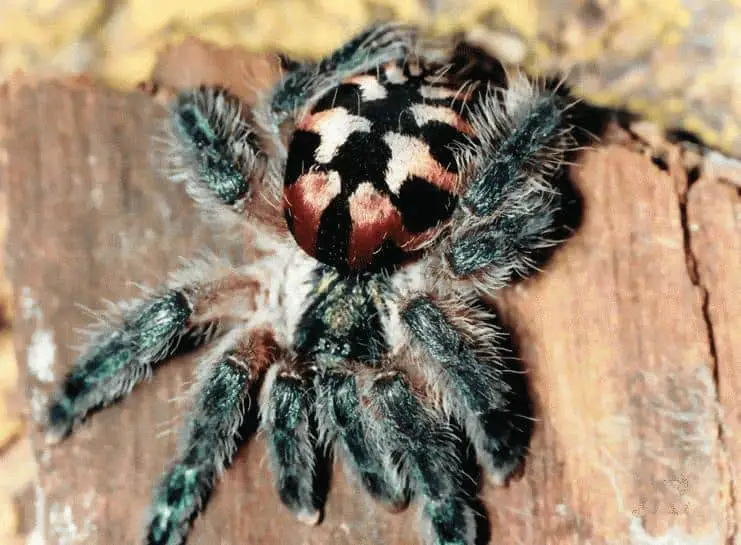
| Category | New World |
| Type | Arboreal |
| Lifespan | Males, 4 years. Females, 15 years. |
| Size | Females 2.5″ / males 2″. |
| Experience level | Beginner |
The Typhochlaena Seladonia or Brazilian Jewel Tarantula is quite a small and cute species, but at the same time, it’s extremely beautiful.
It’s known for the rainbow of colors it displays on its body, including blue, yellow, black, pink, red, and many others.
You’re technically not allowed to have this species as a pet, but some people do anyway. Nevertheless, they’re an expensive species that can cost up to $1000.
2. Neoholothele Incei
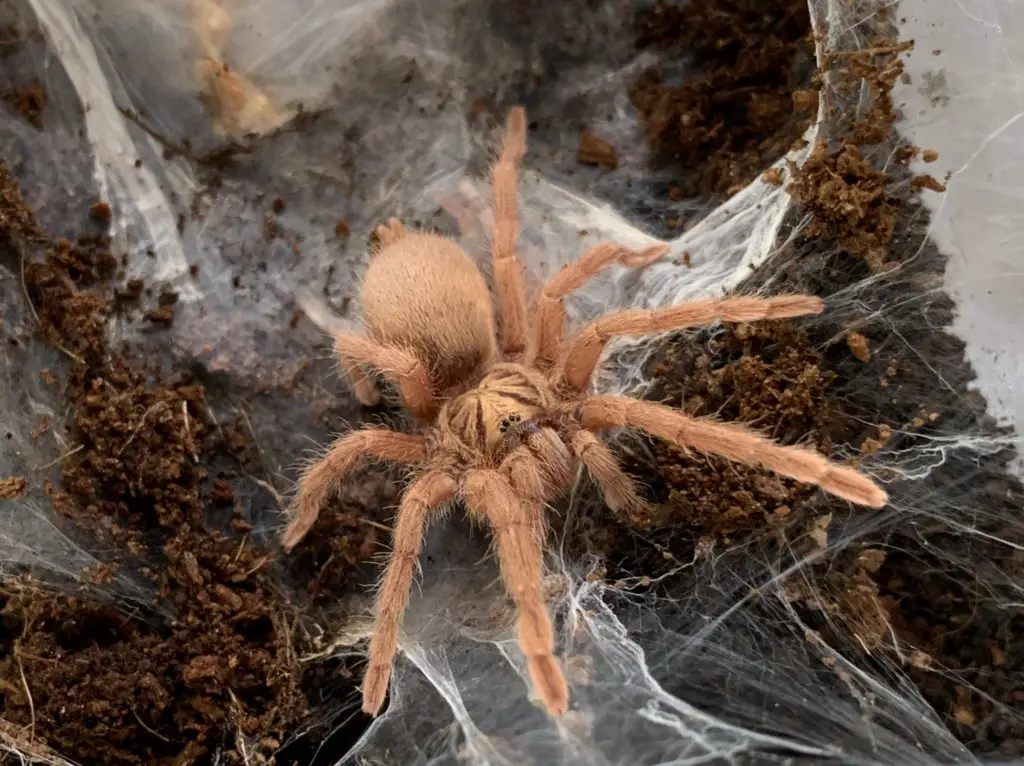
| Category | New World |
| Type | Terrestrial burrower |
| Lifespan | Female: 6 to 7 years / Male: 1 to 2 years |
| Size | 3 inches |
| Experience level | Intermediate |
The Neoholothele Incei, more commonly known as the Trinidad Olive Tarantula, is a dwarf tarantula native to the island of Trinidad. They’re quite small, topping out at a size of about 3 inches.
An interesting aspect of these spiders is that they’re capable of communal living. Most tarantulas are solitary and will eat each other if housed together, but the Trinidad Olive is capable of living in small groups as long as they have enough space and enough to eat!
In addition, they do not have urticating hairs, something that other New World species do have.
3. Hapalopus sp Colombia
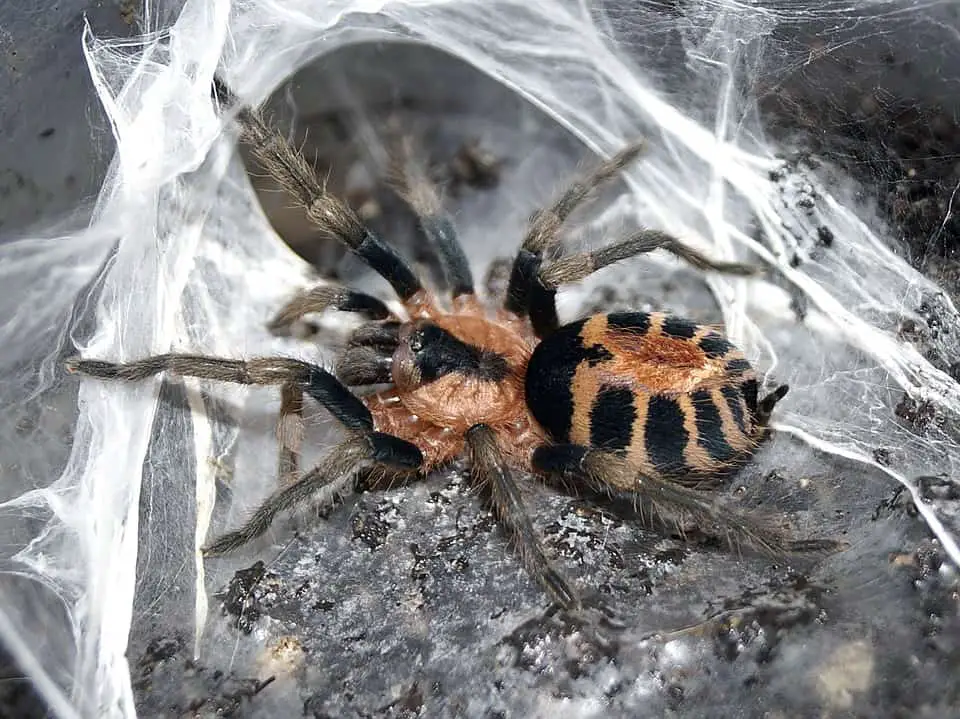
| Category | New World |
| Type | Terrestrial |
| Lifespan | Female: 10 years / Male: 3 years |
| Size | 2.5 inches |
| Experience level | Beginner |
The Hapalopus sp. Colombia is more commonly known as the Pumpkin Patch Tarantula. They’re highly desired for their beautiful orange and black color patterns and small size.
These spiders actually come in two variants, with one being about 2.5 inches in size and the other being about 4 inches in size.
They’re a beginner-friendly species due to their docile nature, though they can be a bit skittish. Another cool aspect of this spider is that they’re heavy webbers.
4. Cyriocosmus Perezmilesi
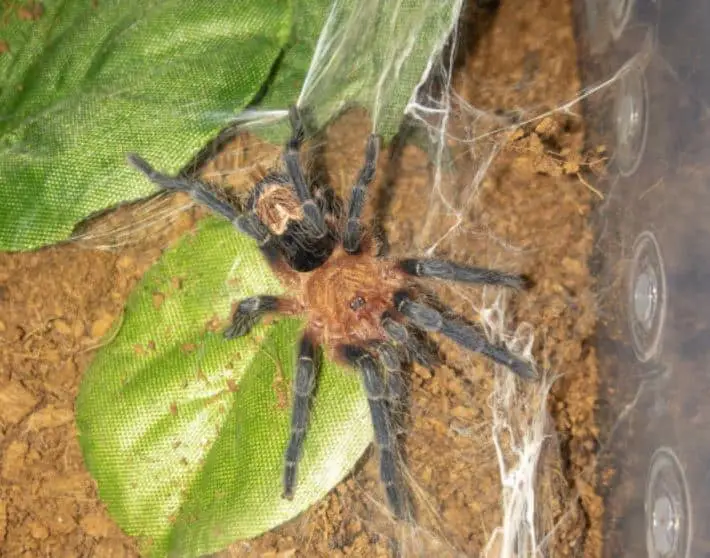
| Category | New World |
| Type | Terrestrial |
| Lifespan | Female: 15 years / Male: 5 to 6 years |
| Size | 2 inches |
| Experience level | Beginner |
The Cyriocosmus Perezmilesi, or as it’s commonly known, Bolivian Dwarf Beauty, is a tarantula native to the region of Bolivia. They’re incredibly small, only growing to a maximum size of about 2 inches. While they’re not big, they’re fast growers that reach their maximum size quite quickly.
They’re black and orange in appearance and are often seen as a smaller version of the Costa Rican Tiger Rump.
Interestingly enough, these spiders do not kick urticating hairs, even though they’re a New World species. They’re also quite docile and very unlikely to bite, making them very suitable for beginners.
5. Cyriocosmus elegans

| Category | New World |
| Type | Terrestrial |
| Lifespan | Female: 7 years / Male: 2 years |
| Size | 0.5 to 2 inches |
| Experience level | Beginner |
The Cyriocosmus elegans, or Trinidad Dwarf Tarantula as it’s called in the hobby, is a tiny dwarf species native to Trinidad and Venezuela.
It’s one of the smallest species in the world. Since they’re sexually dimorphic, males are much smaller than females. Typically, males are about 0.5 to 1 inch in size, while females are 1.5 to 2 inches.
This is a docile species that is a little bit skittish, but they do spend quite a bit of time outside of their hide exploring their enclosure, which makes them fun to watch.
In addition, they have very interesting colors. They typically have a black body with orange markings and a characteristic heart-shaped pattern on their abdomen.
On the whole, this is an excellent species for beginners. Not only are they small and cute, but they’re also very docile while still having a good appetite.
6. Kochiana brunnipes

| Category | New World |
| Type | Terrestrial |
| Lifespan | Female: 6 to 10 years / Male: 2 to 3 years |
| Size | 2 to 2.5 inches |
| Experience level | Beginner |
The Kochiana brunnipes or Dwarf Pink Leg Tarantula is an adorable species native to Brazil. These tiny fellows are typically docile, but they are quite reclusive. They’re a burrowing species, and they will spend quite a lot of time hidden away in their burrows.
When they do come out though, they’re a pleasure to behold because they can create magnificent webs and have a great feeding response.
They’re definitely suitable for beginners, but if you choose this spider you should be prepared that you might not be able to see them as often as you’d like.
7. Heterothele villosella

| Category | Old World |
| Type | Terrestrial |
| Lifespan | Uncertain, believed to be 12-15 years for females, 4-5 years for males. |
| Size | 3 inches |
| Experience level | Intermediate |
The Heterothele villosella, or Tanzanian Chestnut Baboon Tarantula is the only Old World Tarantula species on this list. They’re known for their black coloration with yellow markings.
They’re one of the smallest baboon spiders and are typically less defensive than other baboons. Nevertheless, since they’re an Old World species, you do have to be careful because they have potent venom.
They are terrestrial borrowers, so they will create their hide underground. In addition, they’re heavy webbers that can make intricate web structures.
Due to their high speed and more potent venom, the Tanzanian Chestnut Baboon is not recommended for first-timers. However, if you already have some experience under your belt then this species is a good introduction to Baboon spiders.
8. Dolichothele diamantinensis
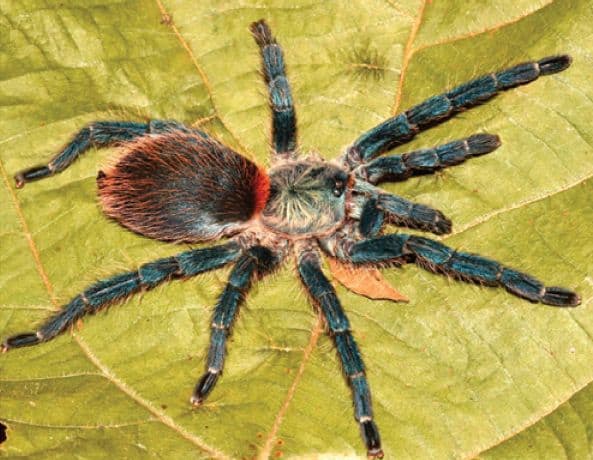
| Category | New World |
| Type | Terrestrial |
| Lifespan | Females 12-15 years / Males 3 years |
| Size | 3 inches |
| Experience level | Intermediate |
The Dolichothele diamantinensis is commonly known as the Brazilian Blue Dwarf Beauty, which is a very descriptive name. They’re a beauty of a spider with a variety of different colors. It’s sometimes described as the Greenbottle Blue‘s little brother.
It was introduced in the hobby in 2012, so quite recently. Since then, they’ve rapidly gained popularity due to their colorful appearance and small size.
Their temperament is often described as skittish, but they’re not very defensive. They might give you a threat pose in extreme situations, but they will almost never use their fangs to bite you.
9. Homeomma chilensis
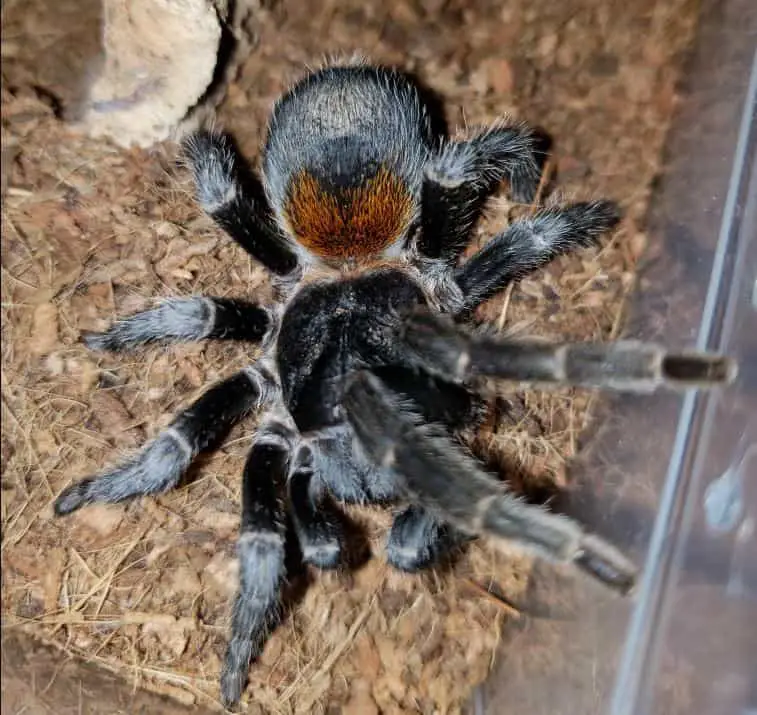
| Category | New World |
| Type | Terrestrial |
| Lifespan | Females 8 to 12 years / Males 2 to 3 years |
| Size | Females 3 inches / Males 2.5 inches |
| Experience level | Beginner |
The Homoeomma chilensis is more commonly known in the hobby as the Chilean Dwarf Flame Tarantula. They’re desired not only for their small size but also for their jet black appearance with cool markings on the abdomen.
But their appearance is not the only great thing about them, their personality is no slouch either. They’re very docile, and actually quite curious and explorative. They’re one of the more active species and you’ll often see them wandering around their enclosure.
This is a species that’s great for someone who’s new to the hobby and wants to start with a small, docile spider.
10. Davus Pentaloris

| Category | New World |
| Type | Terrestrial |
| Lifespan | Females 8 to 12 years / Males 2 to 3 years |
| Size | 4.75 inches |
| Experience level | Intermediate |
The Davus Pentalorus is called the Guatemalan Tiger Rump Tarantula in the hobby. They’re a dwarf species that is native to Guatemala and Mexico.
They’re not the smallest of the species on this list, topping out at about 4 inches, but they’re still relatively tiny.
These tarantulas are known for their reddish carapace, black legs, and black abdomen with unique red tiger stripes.
The Guatemalan tiger Rump is quite easily startled, and not as docile as many of the other species on this list, which makes them less suitable for absolute beginners. However, if you do have some experience, they’re a great option to consider.
Final words
While small and cute might not often be associated with tarantulas, I hope this list has changed your mind. Not all tarantulas are giants, but what these little guys lack in size, they more than make up for in beauty and personality!
If you’re considering adding a dwarf tarantula to your collection, you can’t go wrong with any of the species listed above!
- How Long Do American Eskimo Dogs Live? Important Factors and Care Tips - September 29, 2023
- Do American Bulldogs Need Grooming? Essential Tips and Care Guidelines - September 29, 2023
- Do Bengal Cats Enjoy Playing? Essential Tips for Keeping Them Active - September 29, 2023